Grand Coulee Dam
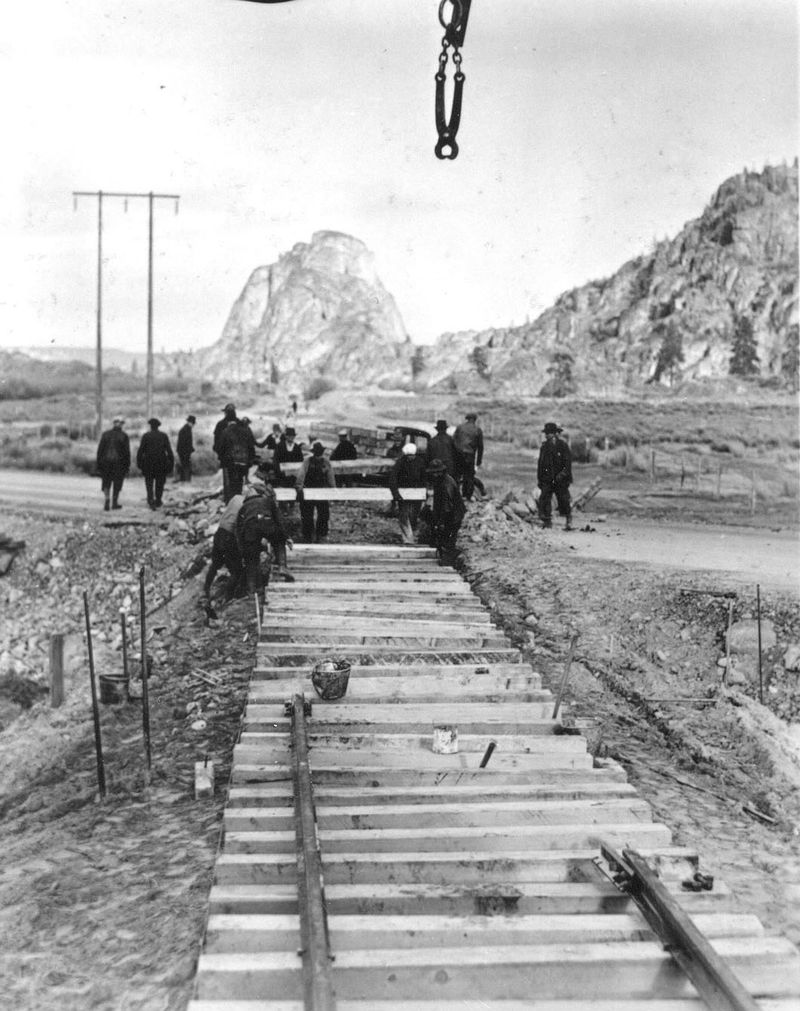
View of the Coulee Railroad construction crew laying ties for the railroad spur being built between Coulee City and Coulee Dam, Wash. (Grand Coulee Project Office)
The third stop and ultimate destination of the tour is mammoth Grand Coulee Dam and its supporting complex of structures, offices, warehouses, pumps, and power lines. At first approach, experiencing the dam is all about absorbing its mind-numbing metrics and enormous scale. But our tour delves beyond initial impressions to provide you with a glimpse into the dam’s design and operation as well its impact on Native American life and culture, the regional economy, and history at all levels. We will go behind the scenes and become acquainted with the challenges faced by the U.S. Bureau of Reclamation in managing this critical infrastructure while fulfilling its stewardship of this historic property as mandated by the National Historic Preservation Act. While the dam is an undeniable engineering achievement, its impact on Native Americans in the region has resulted in hardships with which the Confederated Tribes of the Colville Reservation continue to cope. We will have an opportunity to learn more about impacts to the Tribe’s cultural resources during a lunchtime discussion with the CTCR’s Tribal Historic Preservation Officer (THPO).
Grand Coulee Dam is one of the largest structures ever built by mankind, a mass of concrete standing 550 feet high and 5,223 feet long, or just shy of a mile. Grand Coulee contains 12 million cubic yards of concrete, or enough to build a highway from Seattle to Miami. More massive than the Great Pyramid of Giza, Grand Coulee is listed by the American Society of Civil Engineers as one of the seven civil engineering wonders of the United States. Grand Coulee’s reservoir, Franklin D. Roosevelt Lake, stretches 150 miles north, almost to the Canadian border. A concrete gravity dam, Grand Coulee took eight years to build, employed thousands of workers during the Great Depression and, when completed in 1942, provided the enormous electrical power necessary to make aluminum, so essential for World War II production of planes and ships. It was Grand Coulee, as well, that powered the production of plutonium at the nearby Hanford Site, which figured prominently in the making of the atomic bomb. So grand was Grand Coulee Dam that in 1941, folk singer Woody Guthrie wrote “The Song of the Grand Coulee Dam” (though he was paid to do so under contract with the Bonneville Power Administration.) “Biggest thing built by the hand of a Man,” Guthrie sang. “Power that sings, boys, turbines that whine. Waters back up the Canadian Line.”
Grand Coulee played an important role in America’s amazing rollout of warplanes and ships. Coulee powered the Boeing Aircraft Works near Seattle and shipyards in Vancouver, Wash., and Portland, Ore. Airplanes required aluminum, and by war’s end, Grand Coulee was playing a huge part in a Pacific Northwest that produced more than one-third of the nation’s aluminum. With the end of World War II, the Northwest’s economy continued to boom. Water pumped from Grand Coulee began reaching Columbia Basin lands in 1951 and today irrigates about 670,000 acres, although the project was designed to deliver a full water supply to 1.1 million acres. In a region once used only for dry-land farming and livestock grazing, crops grown today range from forage and cereal grains to fruit, vegetables, and specialty crops such as mint and wine grapes. In 1967, construction began on the massive, 20-story-high, Third Power Plant, designed by world-renowned architect Marcel Breuer in his signature “Brutalist” style. Today Grand Coulee is the largest hydropower producer in the United States, producing 21 billion kilowatt hours of electricity a year, or about 11 percent of the power requirements of the Pacific Northwest. Grand Coulee still ranks among the largest dams and top producers of electricity in the world, although it has been eclipsed in recent years by dams such China’s Three Gorges Dam on the Yangtze River, which has been criticized for its impacts on people and the ecosystem. Grand Coulee also has faced criticism, most notably for its impact on West Coast salmon and steelhead populations.
Source: Discover Our Shared Heritage Travel Itinerary Bureau of Reclamation Historic Dams and Water Projects
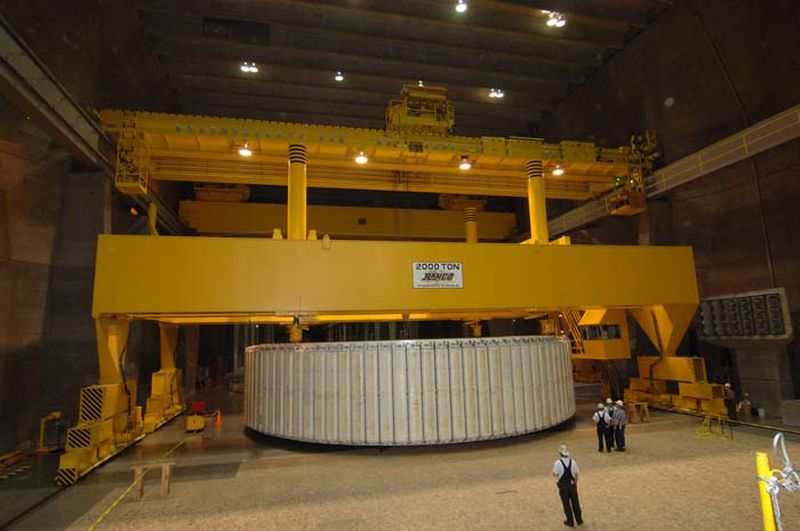
The generator rotor in the third power plant.
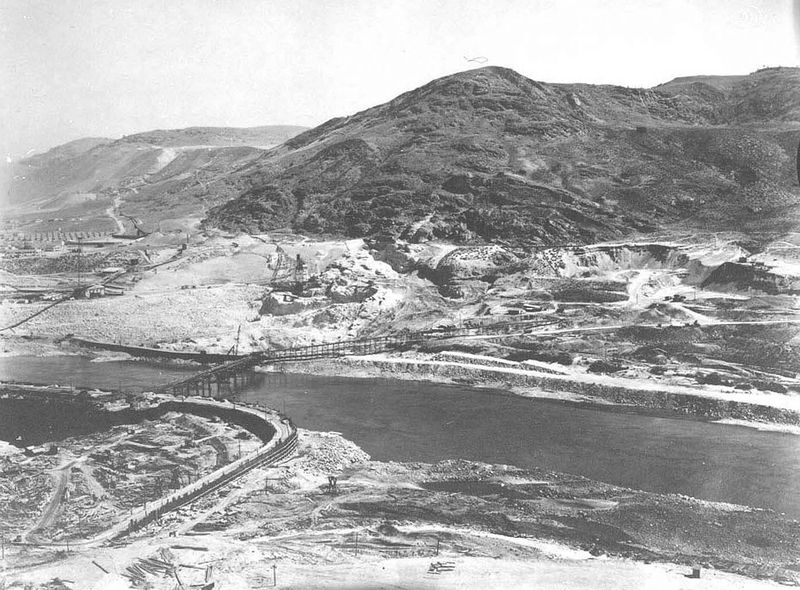
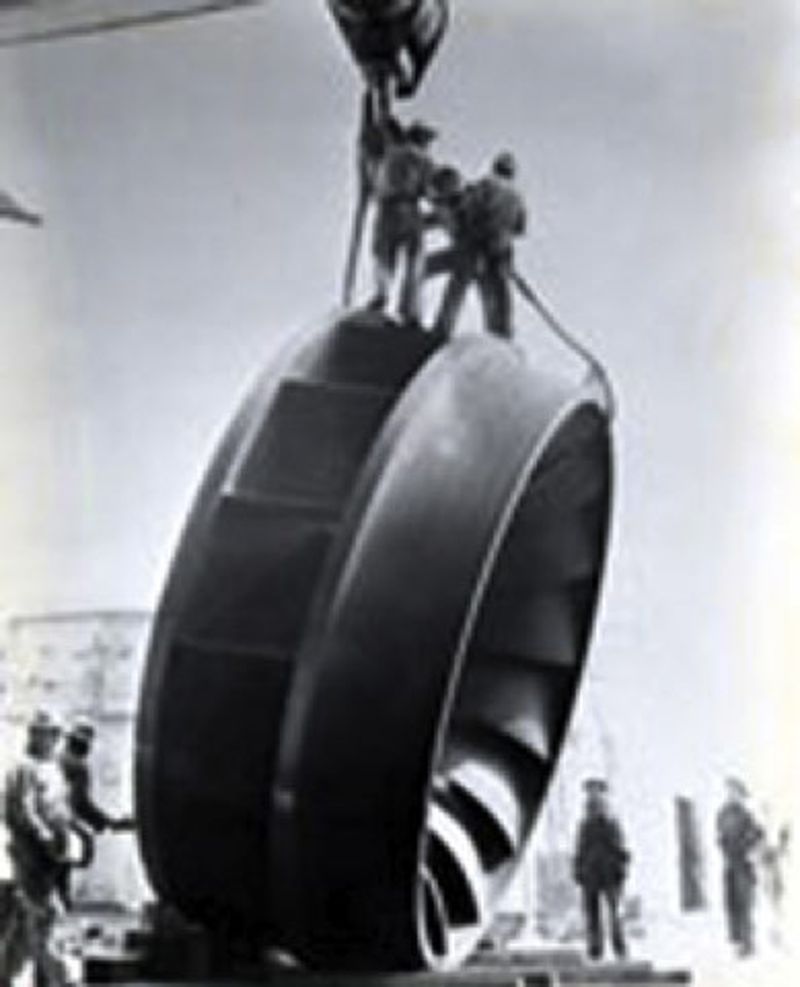
A 150,000-horsepower waterwheel for a generating unit is unloaded at Grand Coulee Dam, June 25, 1947. (Bureau of Reclamation)
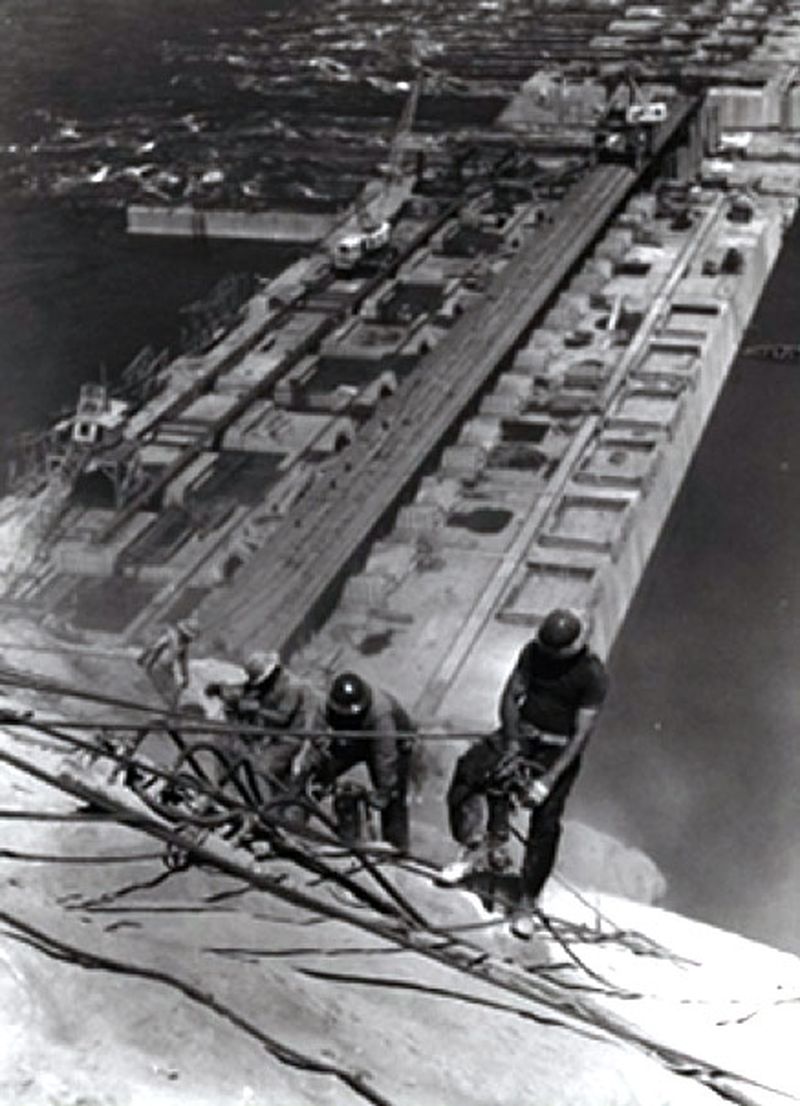
Jackhammer crews drilling blasting holes at Grand Coulee Dam in 1938. (Bureau of Reclamation)
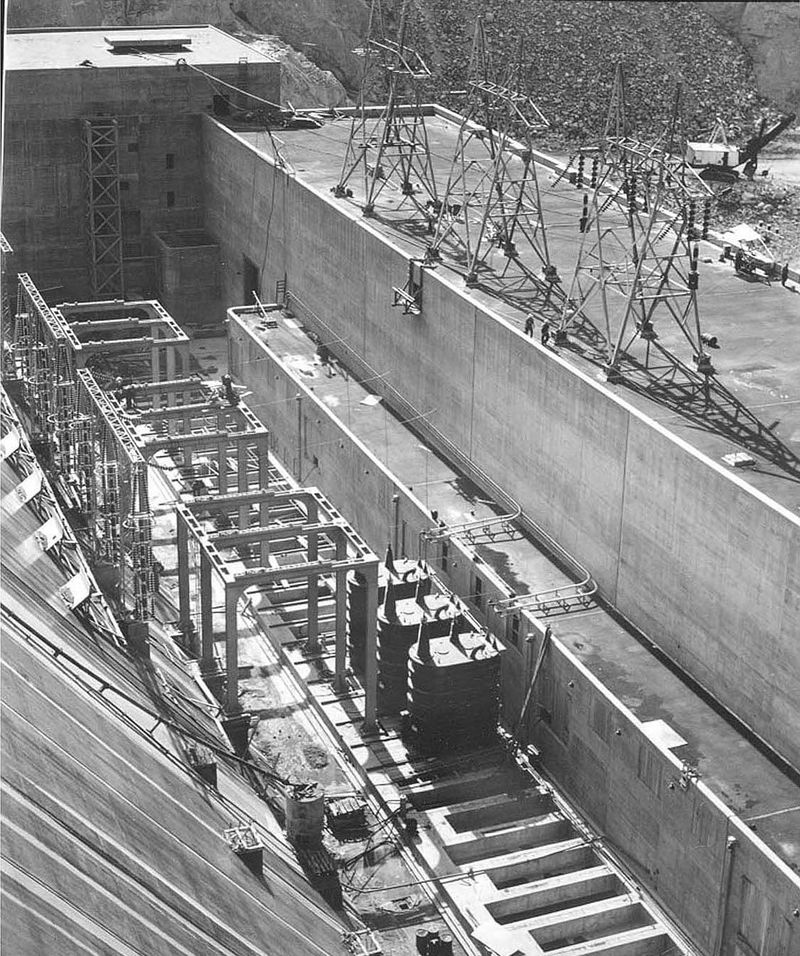
The left powerhouse in 1942.